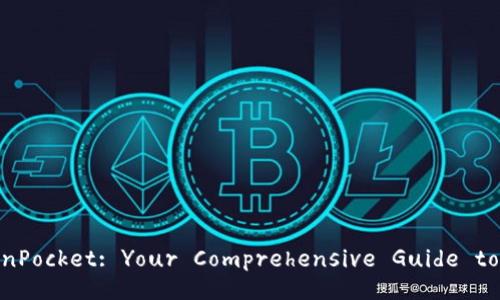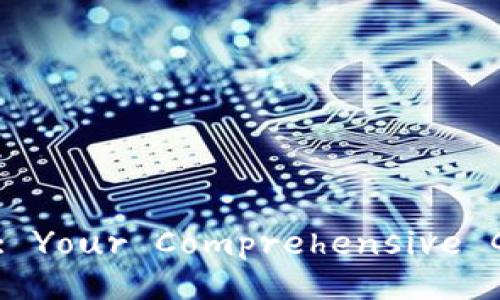In the fast-evolving world of cryptocurrency, digital wallets have become essential tools for managing digital assets. TokenPocket is a prominent name in this space, known for its user-friendly interface and versatile functionalities. This guide aims to provide a deep dive into TokenPocket, exploring its features, benefits, and how it stands out in a crowded market. By the end, you will understand why TokenPocket is a go-to wallet for many cryptocurrency enthusiasts and users.
TokenPocket is a decentralized multi-chain wallet that enables users to manage their cryptocurrencies and tokens across various blockchain networks. Launched in 2018, TokenPocket has grown rapidly and now supports a wide range of cryptocurrencies, DeFi applications, and NFT platforms. The wallet is available in both mobile and desktop versions, accommodating the needs of different users across various devices.
One of the standout features of TokenPocket is its multi-chain support. Unlike some wallets that are limited to a single blockchain network, TokenPocket allows users to interact with multiple chains, including Ethereum, Binance Smart Chain, TRON, Polkadot, and others. This functionality is particularly beneficial for users engaged in decentralized finance (DeFi) and trading across different platforms.
In terms of security, TokenPocket employs various measures such as mnemonic phrases, private keys storage, and biometric security features on mobile devices. By giving users full control over their private keys, TokenPocket aligns with the principles of decentralization and user sovereignty, allowing users to manage their assets securely and independently.

TokenPocket boasts a variety of features that cater to both novice and experienced cryptocurrency users:
Getting started with TokenPocket is straightforward. Here’s a step-by-step guide:

TokenPocket offers several advantages that make it an appealing choice for cryptocurrency users:
As with many cryptocurrency technologies, TokenPocket is often subject to misunderstandings. Here are some common misconceptions:
The safety of any digital wallet depends on various factors, including how the user manages their security. TokenPocket utilizes strong security measures, such as end-to-end encryption and multi-layer security protocols. However, user behavior plays a crucial role in overall safety.
TokenPocket stores private keys locally on the user's device rather than on a centralized server, which is a significant advantage in terms of decentralization and security. Users are responsible for their recovery phrases, and losing this phrase can result in irreversible loss of access to their funds. It’s essential to store this information securely and never share it with anyone. Enabling two-factor authentication (2FA) when available provides an additional security layer.
Security threats such as phishing attacks are pervasive in the cryptocurrency ecosystem. Users should remain vigilant and only use official TokenPocket channels and websites to avoid these risks. Overall, while TokenPocket provides robust security features, users must take personal responsibility for their wallet security practices to ensure the safety of their assets.
TokenPocket not only functions as a wallet but also supports participation in staking, depending on the blockchain and specific tokens. Staking allows users to earn rewards by locking up their cryptocurrencies to support network operations.
To stake assets using TokenPocket, users would typically have to follow a few basic steps: first, ensure that the cryptocurrency they wish to stake is supported by the wallet. Next, they would navigate to the staking section within the app, select the asset they wish to stake, and follow the prompts to choose the amount and period of staking. Additionally, some blockchains enable the selection of validator nodes, while others may automatically handle this process.
Once staked, users can keep track of their reward accrual directly in the wallet interface. It’s essential for users to understand the specific terms and conditions for staking each cryptocurrency, including any lock-up periods or fees involved.
Customer support is important for users, especially when dealing with digital assets. TokenPocket provides several resources for user support, including comprehensive documentation, FAQs, and community channels where users can seek help.
In the official documentation, users can find guides and troubleshooting steps for various aspects of using the wallet. Additionally, TokenPocket maintains social media accounts and community forums where users can ask questions, share experiences, and find solutions.
For more direct support, users may need to submit tickets or inquiries through official channels, which could be available on the TokenPocket website. However, response times can vary based on the volume of inquiries, so it’s advisable to check community forums or documentation for quick references.
Overall, while TokenPocket offers various support avenues, users should take the initiative to educate themselves on the wallet’s functionality and best practices through available resources.
TokenPocket is designed to serve as a multi-chain wallet, which means it connects with several blockchain networks. Some of the popular blockchains supported by TokenPocket include:
Support for these blockchains enables users to access various DeFi services, NFTs, and traditional cryptocurrency transactions all from a single wallet. It makes TokenPocket an appealing choice for users looking to navigate the diverse landscape of crypto technologies efficiently.
While using TokenPocket, users may encounter fees, but these depend on the specific blockchain transactions rather than the wallet itself. TokenPocket does not charge any wallet fees for sending or receiving assets. However, users will still need to cover the network transaction fees imposed by the particular blockchain they are interacting with.
For example, Ethereum transactions can sometimes have high gas fees, especially during network congestion. On the other hand, Binance Smart Chain transactions typically incur lower fees, making it more cost-effective for users performing frequent transactions.
Additionally, if users participate in features like staking or trading through integrated DeFi services, there may be additional fees associated with those transactions. It’s crucial for users to check the specific fee structures related to their transactions and plan accordingly.
TokenPocket is a powerful and user-friendly multi-chain wallet that caters to a broad spectrum of cryptocurrency enthusiasts. With its support for various blockchains, robust security measures, and comprehensive features for managing, trading, and staking digital assets, TokenPocket stands out in the competitive landscape of cryptocurrency wallets.
As more users transition into the world of decentralized finance, having a reliable and versatile wallet like TokenPocket becomes increasingly crucial. By understanding its functionalities, benefits, and best practices, users will be better equipped to navigate their cryptocurrency journeys securely and efficiently. As always, users should remain vigilant about their security practices and stay informed about trends and changes within the cryptocurrency ecosystem.
leave a reply